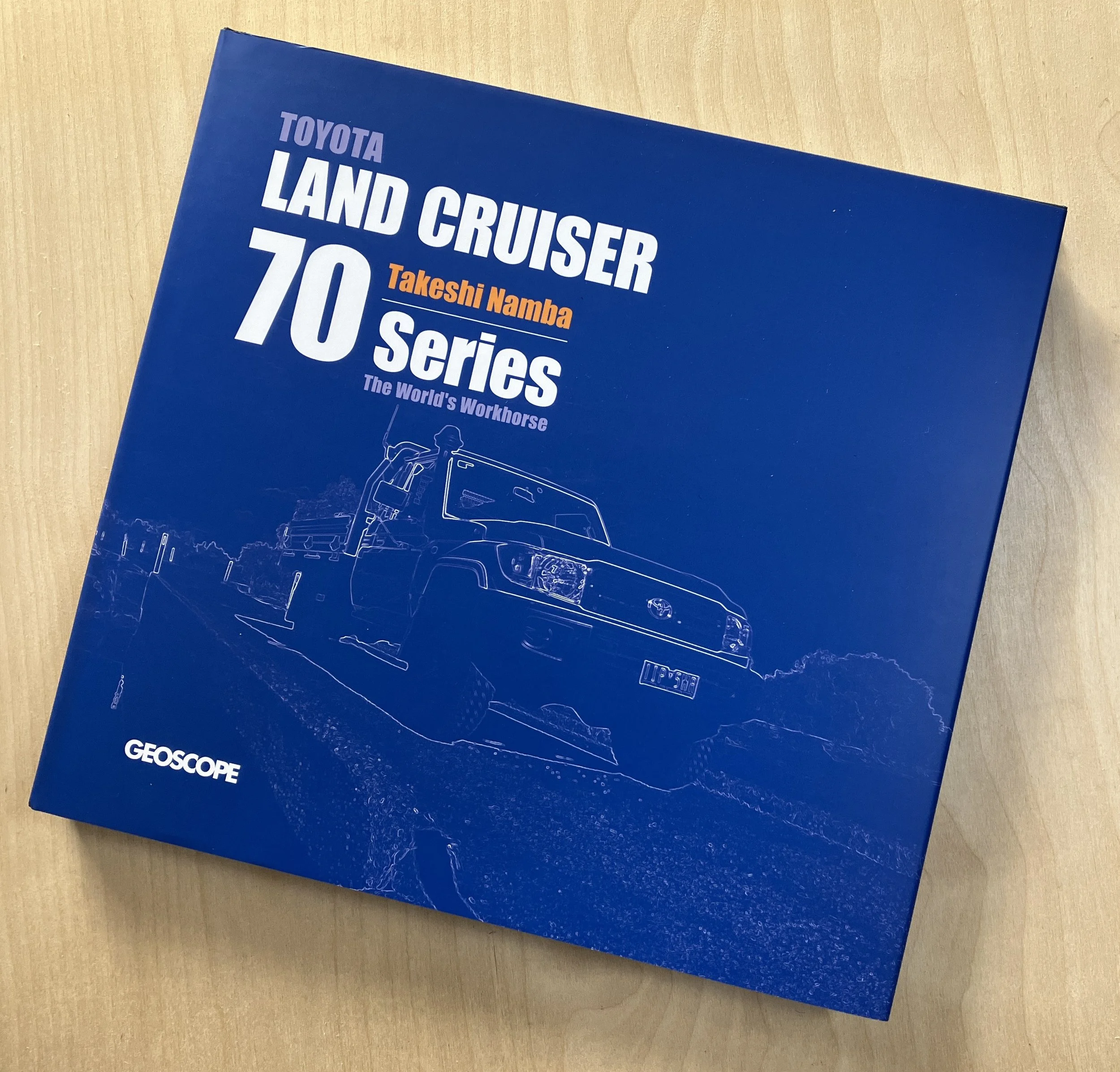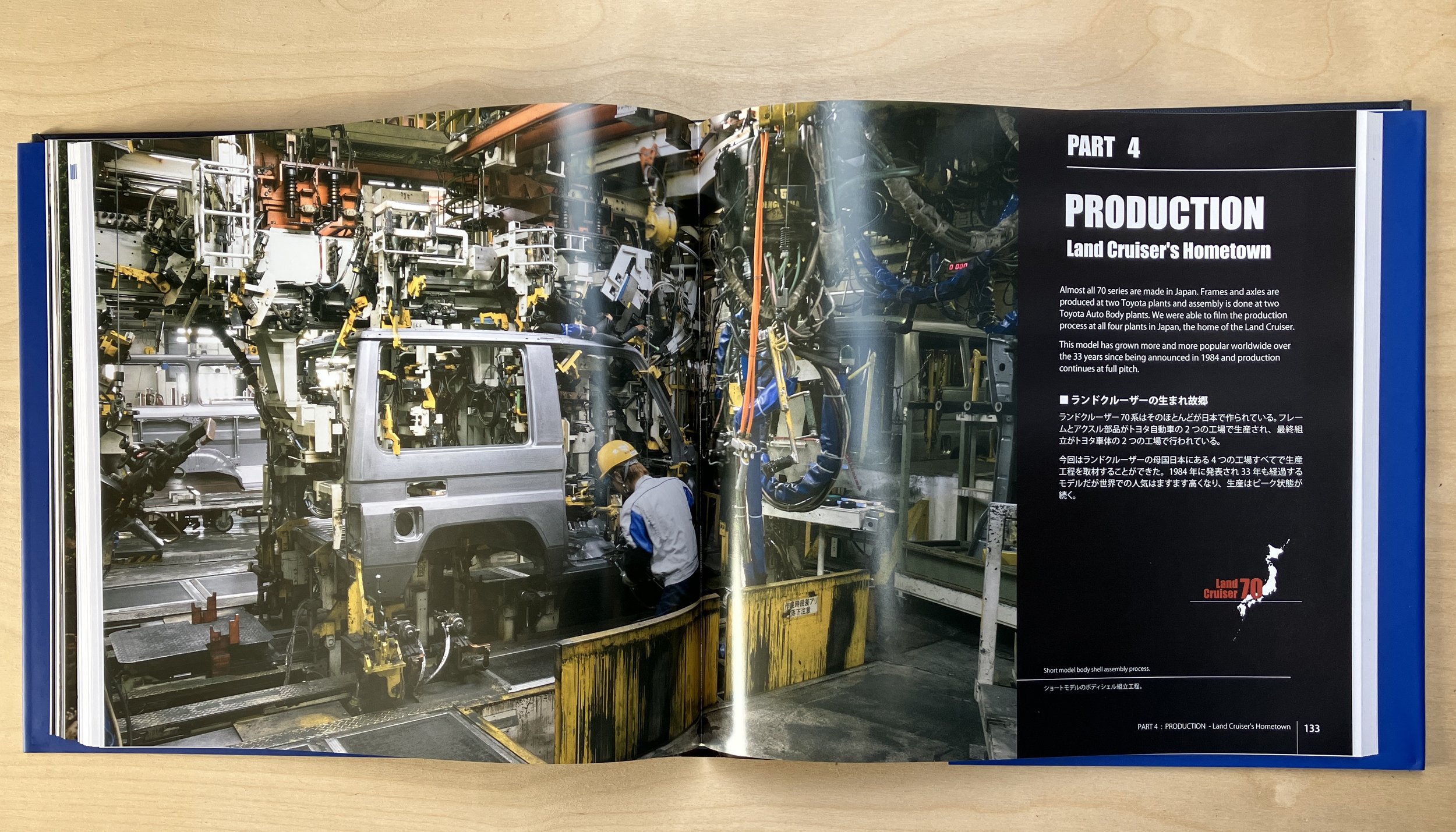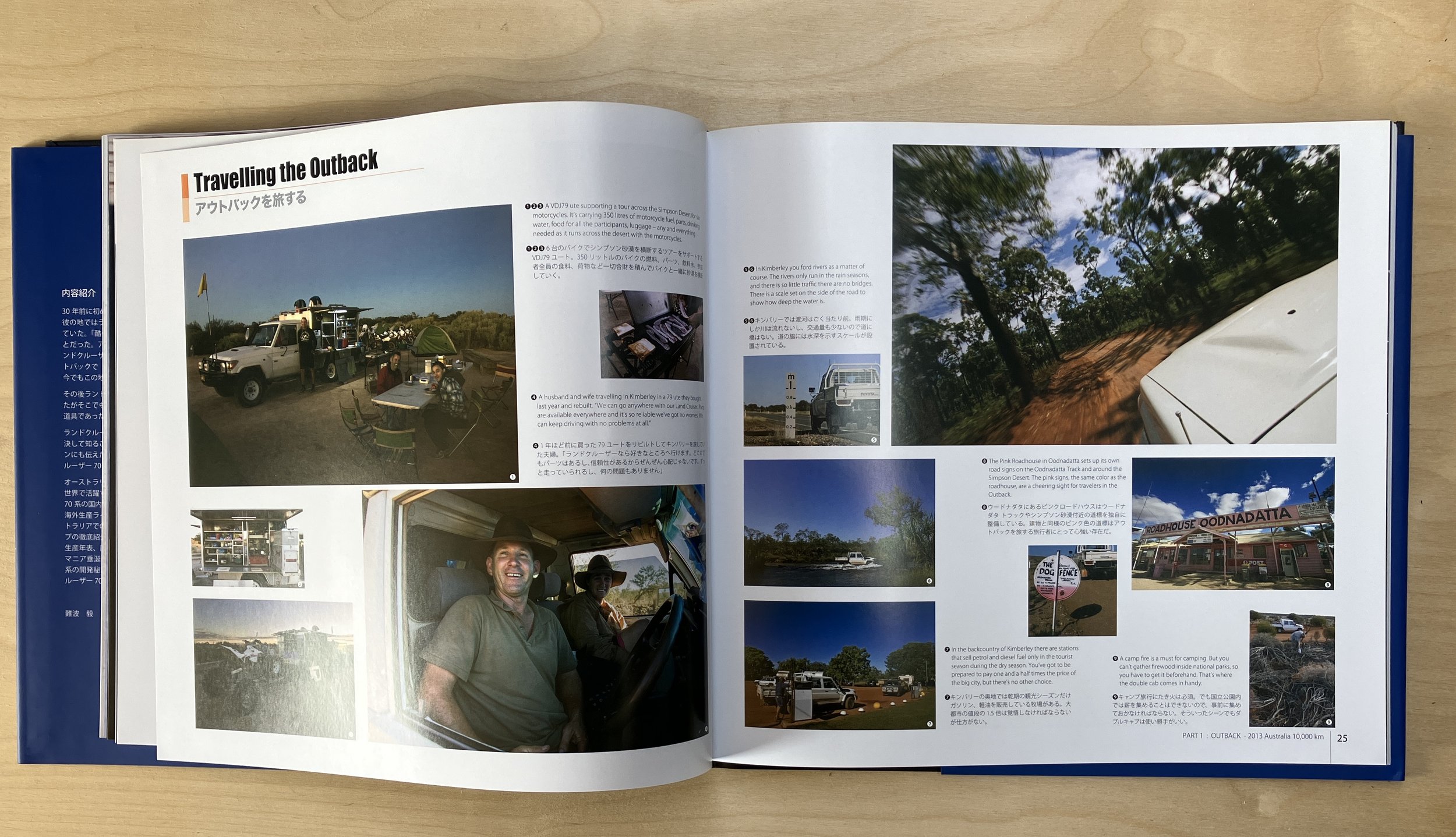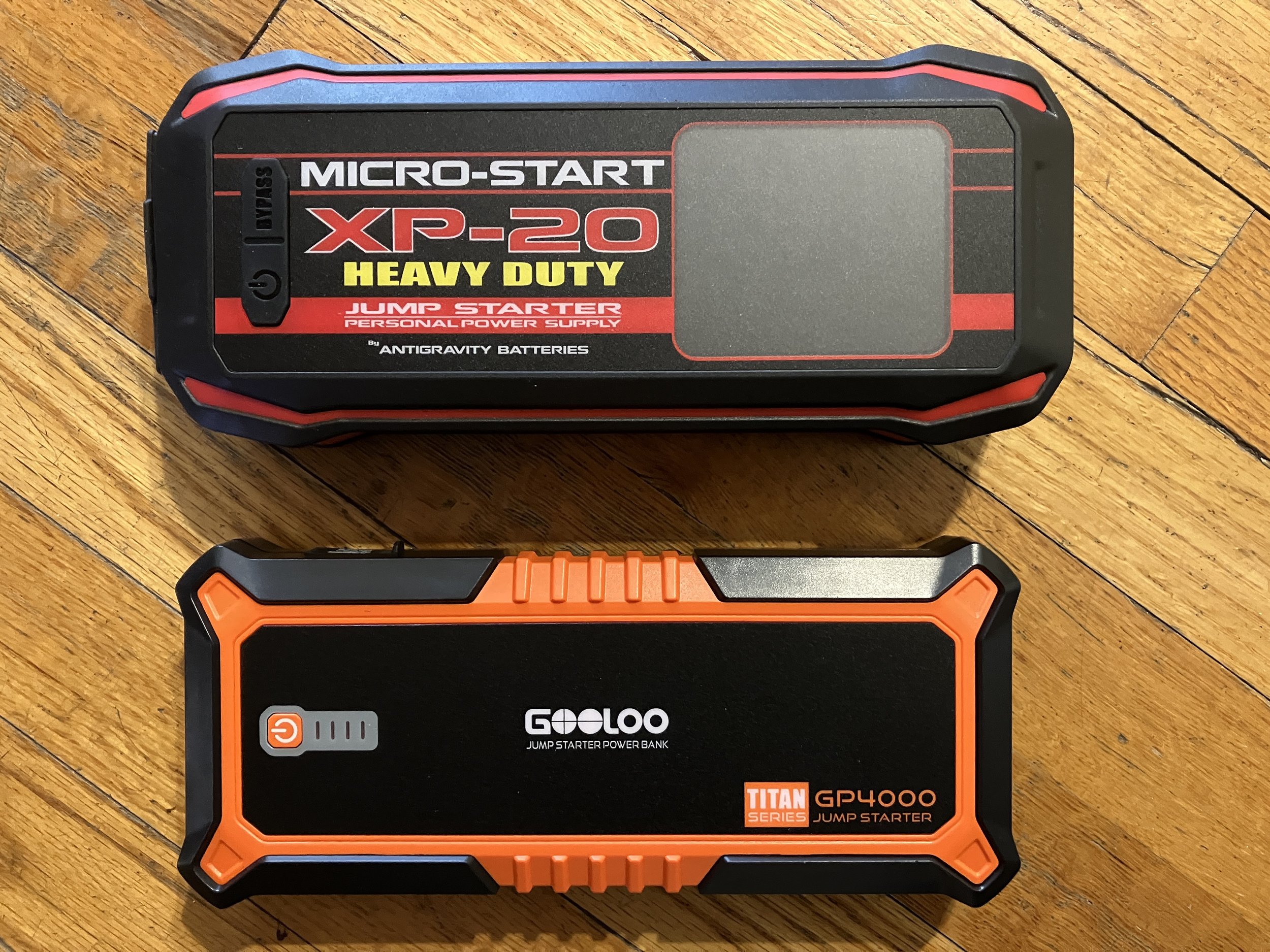
Overland Tech and Travel
Advice from the world's
most experienced overlanders
tests, reviews, opinion, and more
70-Series Land Cruiser book
If you’re a 70-Series Land Cruiser owner—or hopeful future owner, or even just an aficionado—this book is a valuable and enjoyable reference. It comprises over 200 coffee-table-sized pages of crisply produced photographs—well over a thousand in aggregate—along with the history of the series, a complete tour of the factory, and accounts of use of the vehicle all over the globe.
The text is in Japanese and (excellent) English. There are numerous graphs in the back of production history and model changes, plus schematics of all known chassis and body variations. I’m very glad I got a copy.
The link to order is here.
At last, a small shipment of the digitally printed VDEG
There are scant few books that are universally recognized as the timeless bibles in their respective fields: Adlard Coles’s Heavy Weather Sailing; Jack O’Connor’s The Rifle Book; Julia Child’s The Art of French Cooking, Olaus Murie’s A Field Guide to Animal Tracks, to name a few.
Tom Sheppard’s Vehicle-dependent Expedition Guide belongs firmly in that category.
I feel free to say this even though I have been its co-author since 2016, because the VDEG’s reputation was established long before my contributions—in 1998, when Tom Sheppard published the first, hardbound edition in conjunction with Land Rover.
I’d been devouring Tom’s articles on his Sahara explorations for several years by then, and when I read about the just-released book I drove 120 miles to Scottsdale, Arizona, to the Range Rover dealership there—the only outlet in the state—and stood in line at the counter behind a woman who had just bought a Range Rover and was agonizing over the choice of some rhino or leopard-themed accessory. I took my copy home and read it cover to cover.
Soon thereafter, Tom took over the publishing, after which the contents no longer leaned nearly exclusively toward Land Rovers and the relevance of the book expanded hugely.
In 2010, after corresponding with Tom through my position as editor of Overland Journal, Roseann and I met him at his home north of London. In sharp contrast to the brash personality one would expect of an ex-RAF test pilot and RGS Ness Award recipient, we found a charming, self-deprecating man who loved sitting in his upstairs office watching sheep graze in the field below as much as he did exploring Algeria solo and completely off-tracks. We became friends, and in 2015 I was gobsmacked to be asked to share to cover of VDEG.
We maintain a regular, lively correspondence which continues to inspire me to want to be Tom Sheppard when I grow up. He recently sent photos of the new driving lamps he’d just installed on his BMW motorcycle, the better to be able to blast around the back roads near Hitchin.
Tom’s next birthday, by the way, will be his 90th.
To the book: If you have a copy, you are already familiar with the stupendous depth of its information, spread over 620 pages—four-plus pounds worth. Unlike many of the bibles listed above, VDEG receives continual updates with each printing, even if minor. Thus information on vehicles, drivetrains, international shipping, communications, and navigation are always up to the minute in accuracy and relevance. Whether you’re planning a week-long exploration of your own state, or have been tasked with leading a multi-vehicle scientific expedition across the Sahara, the Vehicle-dependent Expedition Guide contains the knowledge you need.
If you don’t own a copy, you should. If you already do, and it’s a post-2016 (Edition 4) version with the new guy on the cover, you’ll find mostly updates to existing information. The big change since then came with Edition 5, which transitioned to sharp, all-digital printing and a larger, easier-to-read (and heavier!) format. It’s a worthy upgrade. The print runs, however, are small—we have just 90 copies and no word whether there will be further ones. I should have said 89 copies, because I’m saving one for myself . . .
The most useful tool I've bought in a long time . . .
For decades I’ve used cheap plastic bolt checkers, with plain holes to confirm diameter and simple scales to measure thread pitch.
This is way, way better. It’s all-metal, and has actual bolt studs and threaded holes to instantly identify nearly any metric or SAE fastener. It took me seconds to identify a couple of weird bolt sizes (3/8 x 24, 1/4 x 28) on my 1976 Triumph TR6, which could theoretically have a mixture of SAE and metric fasteners.
It has holes at each corner, so if you wish you could mount it on the wall behind your workbench.
Made by Hillman. I found it at an Ace Hardware for $30, but you can probably get it or a similar model on Amazon. Highly recommended.
New from Antigravity . . . the ultra-performance Micro-Start XP-20HD
The original Micro-Start XP-1, the first lithium-powered compact jump-starting system on the market, gained instant legend status at the Overland Expo when Tim Scully and I daisy-chained three of them and welded two quarter-inch slabs of steel together, both impressing and horrifying Scott Schafer, the company’s founder. While emphatically not an endorsed application (and probably a deal-killer for any warranty claim), it demonstrated the resilience of the product.
Those same three units went on to do yeoman service at the Expo and on a dozen group trips, jump-starting I have no idea how many SUVs, trucks, and motorcycles, in addition to running our portable devices at the show and other events. We’ve never been without one in each of our vehicles since, and when the heavy-duty XP10 was introduced I put that one in our 6.0-liter diesel Ford F350.
Recently, at long last, two of our original XP-1s began to swell slightly, a sign of impending failure even though both still functioned. So I went to the Antigravity website to see what was new—and found quite a lot. There’s now an economical—and super-compact at three by six inches—XP-3 model, just $120, nevertheless suitable for gasoline engines up to 5.7 liters. The XP-10HD exceeds the capabilities of our already stout XP-10. But what caught my eye were the XP-20 and XP-20HD, the new top-of-the line models with seriously enhanced specifications. So I had the company send me an XP-20HD ($249).
And impressive specs they are. For comparison, the XP-10, which as I mentioned is suitable for starting big diesel engines, offers 300 amps of starting current with a 600-amp peak and a total capacity of 18,000 mAh (milliamp hours). The XP-20HD puts out a massive 930 amps of starting current with a 4,650-amp peak, and total capacity is 24,000 mAh.
That’s not all. Both XP-20 models employ USB-C PD 100-watt charging capability, and will fully recharge in one hour from either a 12VDC or 120VAC source. Each also incorporates a large LED screen that reads out percentage of charge and the power draw of whatever device is connected to it (or the input wattage when charging). When I first used the XP-20HD, to power an iPad at a book festival for taking credit-card payments, the output reading alerted us to the fact that the iPad was running a background program that was drawing excess power. Nice. The XP-20 models will also power/recharge laptop computers via the USB-C output/input port.
Large LED screen shows percentage of charge, and input (or output) wattage.
Oh—incidentally—the XP-20HD will start diesel engines of up to 8 liters and gasoline engines of up to 10 liters. That should take care of most of the overlanding vehicles I know . . .
In the years since the XP-1 first came out the concept of compact jump-start systems has exploded in popularity, and you can now find a dozen or more brands you’ve never heard of on Amazon at discount prices. Personally, my experience with the Antigravity units is enough to retain my loyalty, but I thought I would do a comparison, and so took a look at a friend’s Amazon-sourced unit from GOOLOO, the GP400, which sells for a very tempting $130. (I studiously subsumed my editorial annoyance at the ALL-CAPS brand name and did not let that sway my opinion.)
The GP400’s starting specifications are impressive, if about 15 percent below those of the XP-20HD: 800-amp starting current and 4000-amp peak compared to 930 and 4,650 amps. Much more notable is recharge time: five hours for the GOOLOO versus one for the Micro-Start, thanks to its USB-C PD connection and 100-watt capability. That same capability also allows a topped-up XP-20HD to completely recharge a dead MacBook Pro in about an hour—the GOOLOO could theoretically charge the same MacBook, but at a much slower rate. (With a USB-C cord you can even use the MacBook’s Powerbrick to recharge the Micro-Start from a 120/240V source. Got that?)
Other bits: The battery clamps on the GOOLOO are described as “all-metal,” while the clamps on the Micro-Start are solid copper. And the GOOLOO lacks the extremely useful digital readout of remaining capacity and power draw. I actually liked the GOOLOO’s semi-hard case better than the Micro-Start’s semi-floppy case, and the GP400 does offer a lot for the money; however, taken altogether I think the XP-20HD more than justifies its price premium, especially considering Antigravity’s stature and reputation.
Even if, like many of us, you have a dual-battery system in your vehicle, a Micro-Start offers additional peace of mind against the possibility of a no-start situation—not to mention numerous opportunites to be a hero helping out others. The advanced device-powering and fast recharging capabilities of the XP-20 and XP-20HD models catapult them even further beyond the original brilliant Micro-Start concept. Impressive.
That reminds me . . . I’ve got a bit of welding I need to do on the FJ40’s rear rack.
Kidding, Scott. Kidding.
Hint: When using “Search,” if nothing comes up, reload the page, this usually works. Also, our “Comment” button is on strike thanks to Squarespace, which is proving to be difficult to use! Please email me with comments!
Overland Tech & Travel brings you in-depth overland equipment tests, reviews, news, travel tips, & stories from the best overlanding experts on the planet. Follow or subscribe (below) to keep up to date.
Have a question for Jonathan? Send him an email [click here].
SUBSCRIBE
CLICK HERE to subscribe to Jonathan’s email list; we send once or twice a month, usually Sunday morning for your weekend reading pleasure.
Overland Tech and Travel is curated by Jonathan Hanson, co-founder and former co-owner of the Overland Expo. Jonathan segued from a misspent youth almost directly into a misspent adulthood, cleverly sidestepping any chance of a normal career track or a secure retirement by becoming a freelance writer, working for Outside, National Geographic Adventure, and nearly two dozen other publications. He co-founded Overland Journal in 2007 and was its executive editor until 2011, when he left and sold his shares in the company. His travels encompass explorations on land and sea on six continents, by foot, bicycle, sea kayak, motorcycle, and four-wheel-drive vehicle. He has published a dozen books, several with his wife, Roseann Hanson, gaining several obscure non-cash awards along the way, and is the co-author of the fourth edition of Tom Sheppard's overlanding bible, the Vehicle-dependent Expedition Guide.















